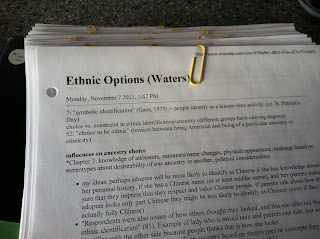Most readers are likely to be familiar with adoption from China (in fact, many of you have firsthand experience that I lack, so please leave comments if I have made any mistakes or left out crucial information!), but I'd like to provide a bit of background information for those of you who aren't.
Why Adopt?
Some families adopt due to infertility. Others, though, choose to adopt for a wide variety of reasons, including humanitarian population growth concerns. (When parents are able to have biological children but choose to adopt, these adoptions are called 'preferential adoptions.')
Why Adopt From China?
Some parents said that they wanted to avoid adopting domestically because the children from public adoption processes were generally older, and babies from private adoptions are sometimes reclaimed by their birth parents. The desire to avoid the return of birth parents pushed some families to turn abroad for adoption. Many parents indicated that they wanted to adopt from China because they had a desire for a daughter and/or interest in Chinese culture. Other parents said that they chose to adopt from China because China's process was known to be faster than most and the babies were healthier than those from other international adoption programs.
Adoption Statistics and Logistics
Data obtained from http://www.adoptivefamilies.com/china_adoption.php
The number of adoptions from China peaked in 2005, with 7,906 adoptions that year. In 2009 the annual number of adoptions dropped significantly but remained quite high at 3,001 adoptions.
Children adopted from China are predominantly female (in 2006, 91% of adoptees were girls), and young (in 2006, 44% were under 1 year of age and only 4% were over 4 years of age).
The adoption process is quite lengthy and expensive; parents may wait for years, and it can cost over $20,000. Furthermore, China's requirements for adoptive parents have tightened in recent years. Single parents are no longer eligible to adopt, and both spouses must have a high school diploma. China has implemented further restrictions related to health, legal history, and income, as well.
A few months after parents receive the referral for the child they will adopt, they must travel to China to bring their child home. Most parents travel with an adoption group and stay in China for 10-14 days, receiving a US visa for their new child at the consulate in Ghuanzhou. In many cases, members of these travel groups stay in contact and serve as a support system for one another in the United States.

